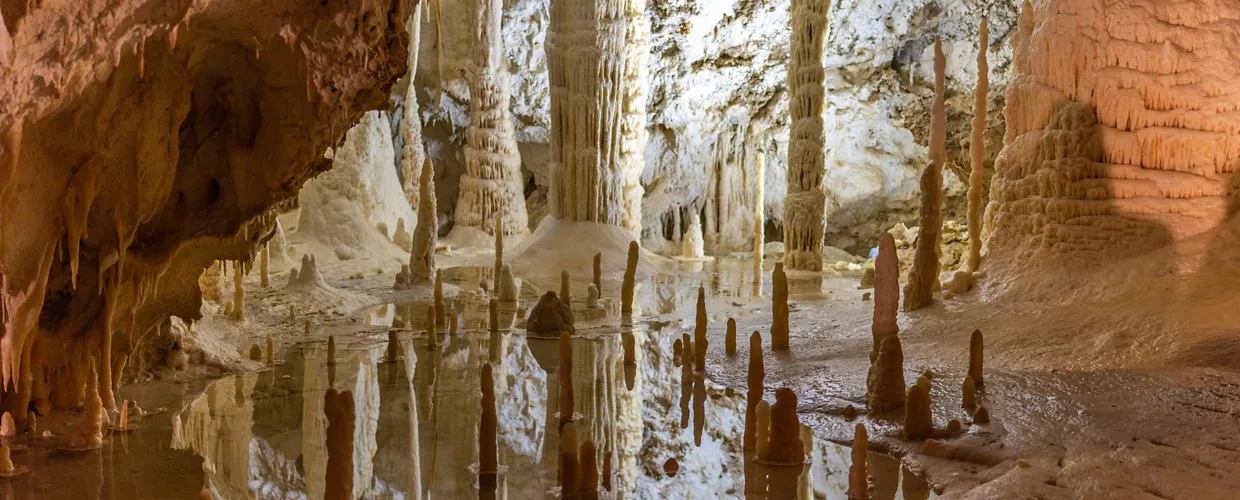This content was automatically translated. View the original text.


Overview
The Frasassi Caves were formed over the millennia by the rising of sulphurous mineralised water that, along the fractures in the rock, met with bicarbonate water from the Sentino stream\'s subterranean water table. The largest and most spectacular cavity, known as Great Wind Cave, was discovered on 29 September 1971 by cavers from the Ancona CAI by a 140-metre descent from the mountain above. At the same time, other caving groups continued the exploration of River Cave, discovered in 1948. In December 1971, the Cai Speleological Group of Fabriano, forcing a narrow passage, connected River Cave to Great Wind Cave.
The tour starts inside the huge, echoing Ancona Hall, which is about 100 metres high and marked by the presence of impressive stalagmites. Then, a series of tunnels leads to other smaller rooms (the Two Hundred Room, the Infinity Room, the Canyon) where the slow dripping of water has created a decoration of stalactites, stalagmites, basins and crystals in fantastic and ever-changing shapes, enhanced by the specially designed artificial white light illumination. The concretions have been given fancy names suggested by their shape and composition, such as organ, candles, colonnade, haystack, waterfall, crystallised pond, castle, giants, obelisk.
There are several continuations of the cave to be travelled with expert guides and equipped with a suit, helmet and headlamp provided by the organisation.